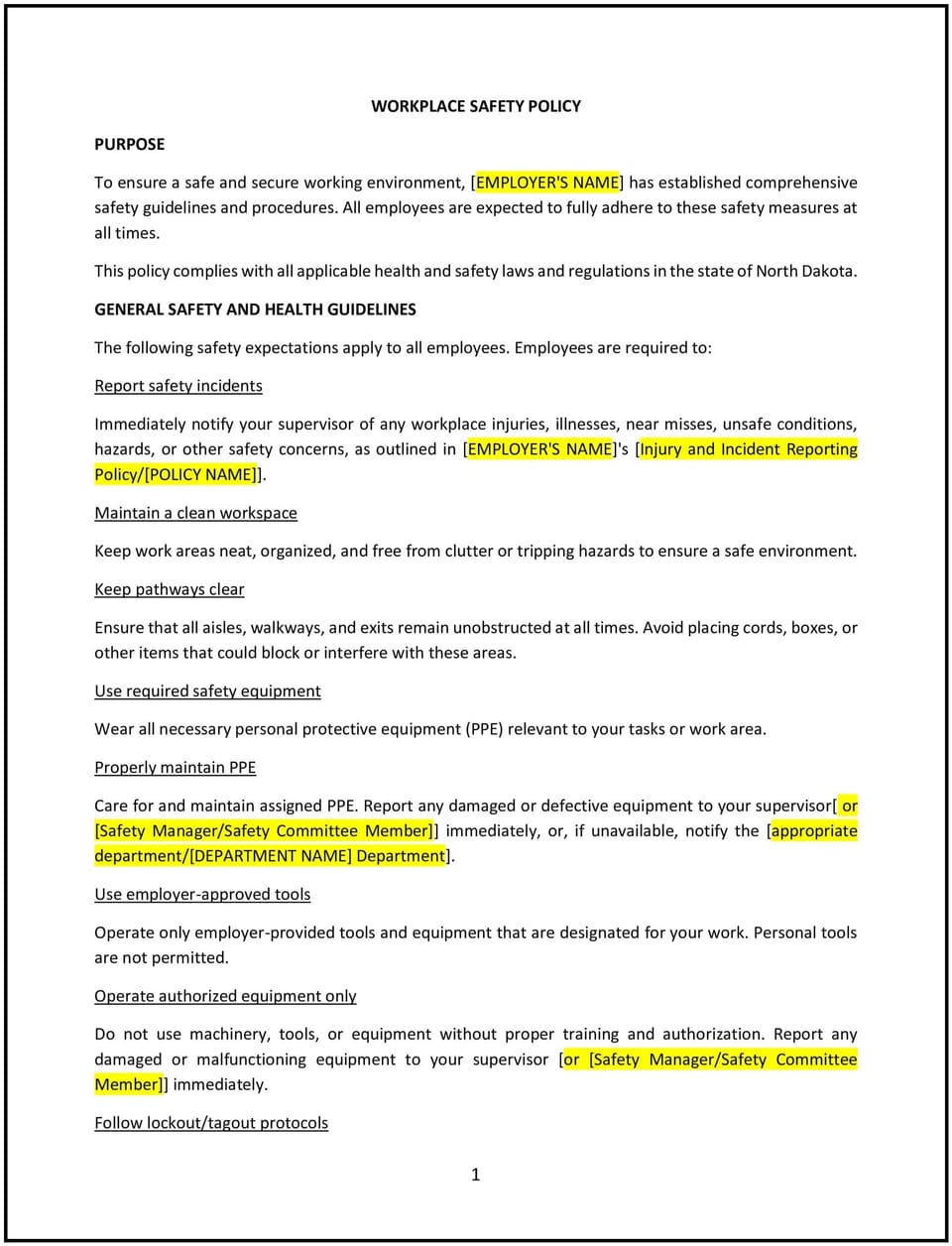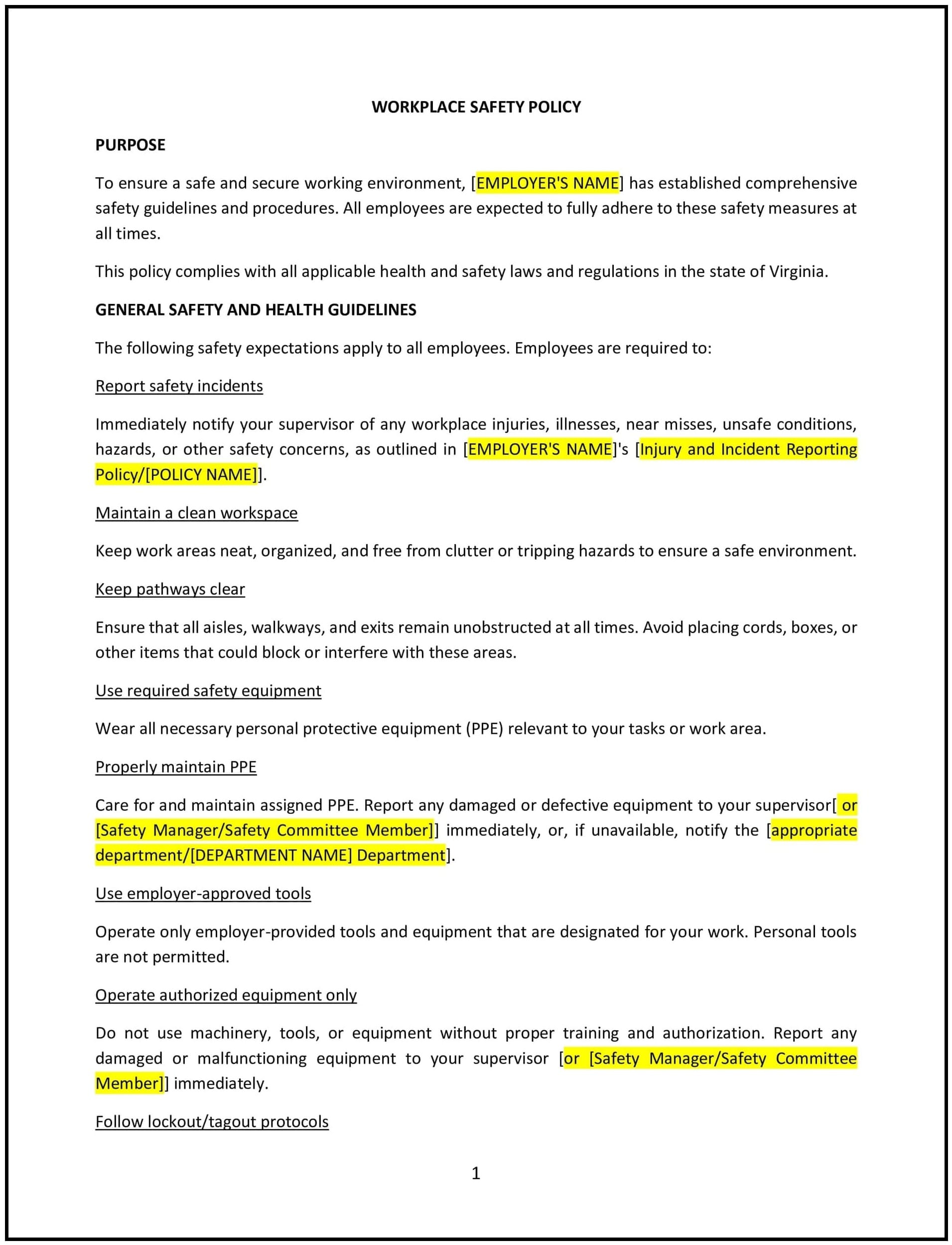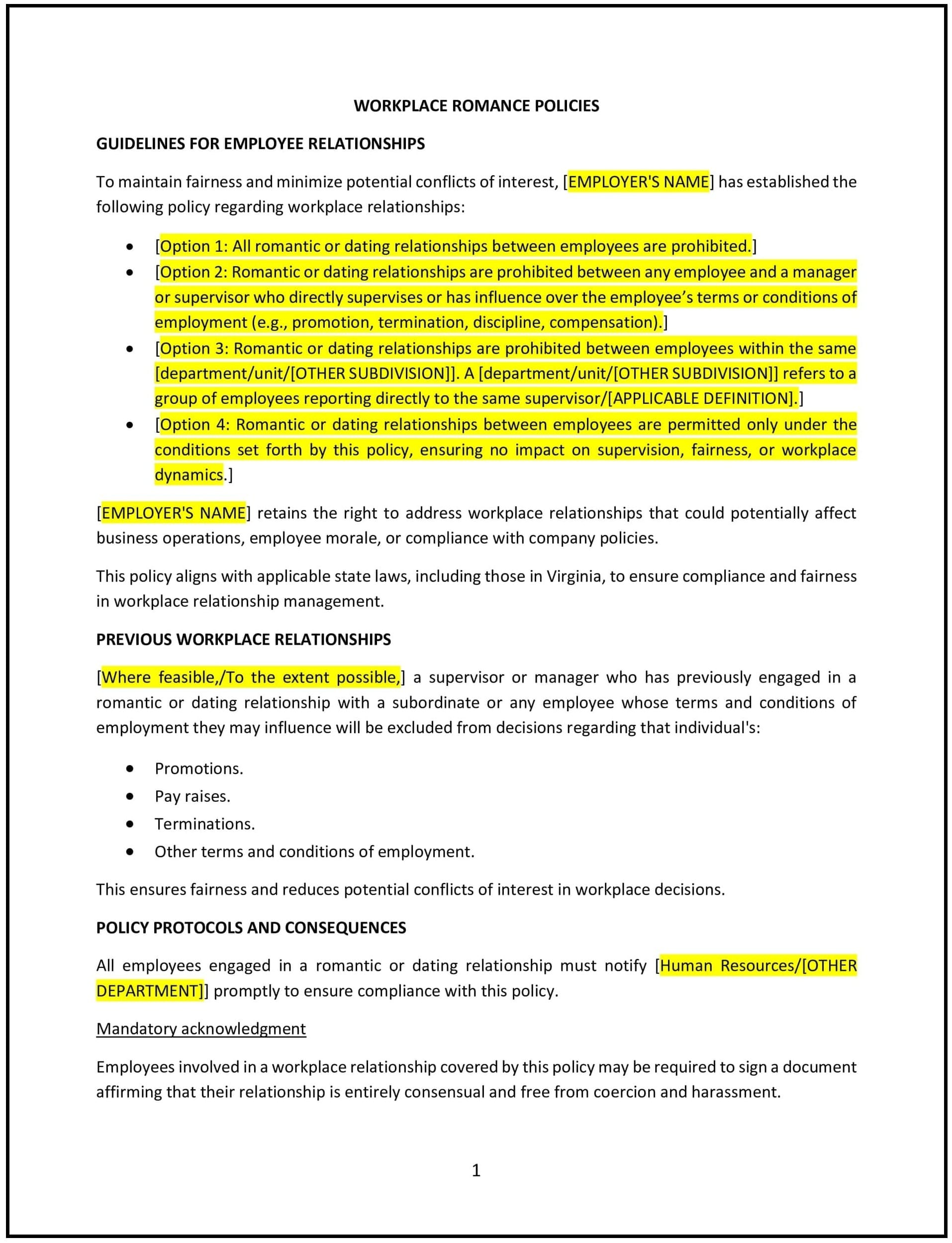Workplace safety policy (North Dakota): Free template

Workplace safety policy (North Dakota)
A workplace safety policy helps North Dakota businesses create and maintain a safe work environment for all employees. The policy defines the company's approach to safety, establishes safety protocols, and sets expectations for both employees and employers to follow. It includes provisions for reporting hazards, responding to incidents, and ensuring that employees have the proper safety training and equipment. The goal is to prevent workplace accidents and injuries while promoting overall employee well-being.
By adopting this policy, businesses in North Dakota can reduce workplace risks, enhance employee safety, and ensure compliance with safety regulations.
How to use this workplace safety policy (North Dakota)
- Define workplace hazards: Clearly identify potential hazards in the workplace, including physical, chemical, ergonomic, and environmental risks. Describe procedures for handling each type of hazard.
- Establish safety procedures: Provide detailed instructions for preventing and responding to workplace accidents, including how to use safety equipment, report hazards, and handle emergencies.
- Set emergency response protocols: Outline procedures for emergency situations such as fires, accidents, or natural disasters. This includes evacuation routes, emergency contacts, and procedures for involving emergency responders.
- Assign safety responsibilities: Designate specific employees or managers who are responsible for safety oversight. This may include conducting safety checks, organizing training, and ensuring compliance with safety protocols.
- Provide safety training: Ensure that all employees receive proper safety training, including orientation for new hires and periodic refresher courses. The training should cover workplace hazards, safety procedures, and proper use of safety equipment.
- Implement reporting procedures: Employees should report safety hazards and unsafe conditions immediately. The policy should specify how incidents should be reported, who they should be reported to, and what steps will be taken in response.
- Monitor safety performance: Regularly assess safety performance by tracking accident reports, near misses, and employee feedback. This helps identify trends and areas for improvement.
- Review and update: Periodically review the policy to ensure it remains relevant and reflects any changes in North Dakota state laws or industry best practices.
Benefits of using this workplace safety policy (North Dakota)
This policy provides several benefits for North Dakota businesses:
- Reduces workplace accidents and injuries: A clear safety policy helps reduce the risk of accidents, injuries, and illnesses in the workplace.
- Improves employee morale: Employees who work in a safe environment feel valued and supported, which improves job satisfaction and retention.
- Supports compliance: A strong safety policy helps businesses comply with safety regulations and avoid fines or legal claims related to workplace accidents.
- Enhances productivity: By preventing accidents and reducing sick days, businesses can maintain productivity and avoid costly disruptions.
- Promotes company reputation: A business with a strong commitment to safety is seen as a responsible employer, which can improve its reputation and attract top talent.
Tips for using this workplace safety policy (North Dakota)
- Communicate the policy clearly: Ensure that all employees are aware of the workplace safety policy and understand the procedures for reporting hazards and emergencies. Include the policy in the employee handbook and provide regular training.
- Encourage safe practices: Promote safety by encouraging employees to report unsafe conditions and follow safety protocols. Offer regular safety drills and updates.
- Monitor and evaluate safety performance: Keep track of safety incidents and use the data to improve policies and practices. Regular safety audits and employee feedback are essential.
- Provide the necessary resources: Ensure that employees have access to appropriate safety equipment, and that it is regularly inspected and maintained.
Q: Why should North Dakota businesses adopt a workplace safety policy?
A: Businesses should adopt this policy to reduce the risk of workplace accidents, promote employee well-being, and ensure compliance with safety regulations, creating a safe and productive work environment.
Q: What types of hazards should be addressed in the workplace safety policy?
A: The policy should address physical hazards, such as machinery and equipment, chemical hazards, ergonomic risks, and environmental factors like noise or temperature. It should also outline procedures for preventing and responding to each type of hazard.
Q: What is the procedure for reporting safety hazards?
A: Employees should report safety hazards to their supervisor, HR, or safety officer immediately. The policy should specify how hazards should be reported (e.g., online forms, written reports, or direct communication) and what actions will be taken in response.
Q: How often should businesses review their workplace safety policy?
A: Businesses should review their workplace safety policy annually or when there are significant changes in regulations, workplace conditions, or operations that could impact safety.
This article contains general legal information and does not contain legal advice. Cobrief is not a law firm or a substitute for an attorney or law firm. The law is complex and changes often. For legal advice, please ask a lawyer.


